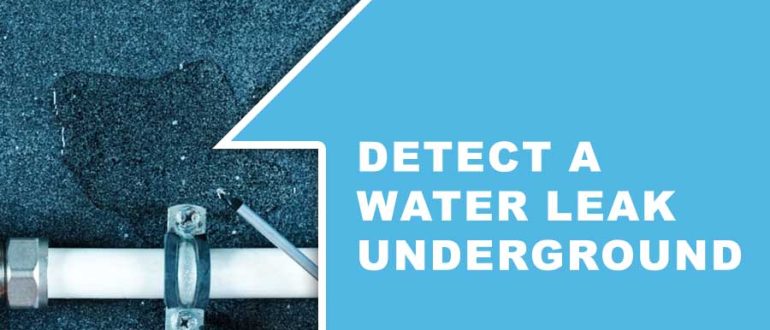Water leak detection is a vital aspect of maintaining both residential and commercial properties. Unseen water leaks, especially those underground, can lead to significant problems if left unaddressed. These include structural damage, wastage of water, and rising utility bills, all of which are unnecessary costs and easily avoidable with the right knowledge and tools. This article sheds light on how you can detect a water leak underground, the technologies involved, and the devices used.
How to find a water leak underground
A water leak underground can be detected by various methods, each having its unique process and technology. Here we explore the different techniques and technologies employed in water leak detection.
1. Acoustic Detection Method
The acoustic detection method is one of the oldest and most effective techniques in identifying water leaks underground. It works based on the principle of sound. When a pipe underground leaks, the escaping water produces a distinct sound. This sound travels along the pipe and through the surrounding material even concrete. Acoustic leak detectors are designed to pick up these sounds, and trained professionals can then analyze these sounds to pinpoint the water pipe leak location. Devices used in this method include ground microphones and listening rods.
2. Tracer Gas Detection Method
Tracer gas detection is a sophisticated method used when the leak is challenging to detect or in non-metallic pipes. A mixture of hydrogen and nitrogen is used as the tracer gas, which is lighter than air, allowing it to escape through the leak and reach the surface quickly. The devices used in this method are specialized gas sniffers, capable of detecting the tracer gas at the surface.
3.Infrared Technology Detection
Infrared technology detection uses thermal imaging cameras to detect leaks. The premise is that water changes the thermal characteristics of the material it seeps into. The camera identifies the differences in temperature, pinpointing the leak location. This non-invasive technique can quickly scan large areas and highlight the precise leak spot.
4. Ground Penetrating Radar (GPR) Detection
Ground penetrating radar is a non-destructive geophysical method that detects changes in subsurface structures. This technology is particularly effective in areas with complex subsurface geology. A GPR device sends a tiny pulse of radar energy into the ground, and any change in the material properties causes a reflection of the radar pulse. This method is used in conjunction with other technologies for confirmation and precise location identification.
5. Data Loggers
Data loggers are devices that can measure and record water pressure over time. They are installed on water pipes and left to record data, usually overnight. Analysis of this data can show if a pressure drop has occurred, which can indicate a leak. This method is efficient for detecting small leaks that may not produce noticeable acoustic or thermal signals.
6. Smart Ball Technology
Smart ball technology involves inserting a ball-like device into the pipeline. This device travels with the water flow, using acoustic sensors to detect the sound of a leak. The data is recorded and analyzed after the smart ball is retrieved. This technology is especially useful for large diameter pipes and long-distance pipelines.
7. Correlators
Correlators are devices used to accurately locate leaks in water networks. They work on the principle of comparing noise frequencies at different points along the pipe. Two sensors (connected to the correlator) are attached to fittings on the pipeline, such as valves or hydrants. When a leak noise is detected, the correlator calculates the leak’s exact location based on the speed of sound in water and the time delay between the sensors.
In conclusion, detecting a water leak underground is a complex process that requires specialized knowledge and tools. It’s not just about saving water; it’s about preventing potential property damage and saving money in the long run. By understanding these methods and the technologies involved, we can make informed decisions about water leak detection and the maintenance of our infrastructure. Keep in mind that not all leaks can be easily detected by a single method. Sometimes, combining various technologies yields the most accurate results. Despite the initial cost, employing professional leak detection services ensures the utmost accuracy and effectiveness. They utilize advanced devices and methods mentioned above to safeguard your property from the detrimental effects of water leaks. In the end, understanding and acting upon underground water leak detection is an investment in the longevity and value of your property, ensuring its structural integrity and optimal function for years to come.

